Laval Nozzle Pressure Apparatus
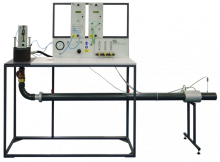
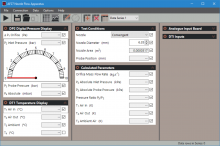
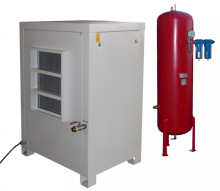
A floor standing apparatus to demonstrate the thermodynamics and fluid mechanics of the adiabatic expansion of air through subsonic and supersonic nozzles.
For classroom demonstrations and student investigations into the behavior of fixed-wing aircraft and wing performance during take-off, flight, and landing.
The apparatus is an open-circuit wind tunnel with a model aircraft suspended in the working section. The model is supported by linkages that allow it to move vertically and to pitch about the quarter chord point independently. The working section is brightly illuminated and the aircraft model is clearly visible through a large transparent window. The operator flies the aircraft manually using a control column and throttle. These are positioned directly in front of the window and are arranged typically as found in a light aircraft, providing realistic simulation of flight and the effect of the control surfaces. To fly the aircraft, the operator pushes the throttle lever forward to increase the tunnel airspeed. When the airspeed reaches a certain level the aircraft may be made to 'take-off' by drawing the control column slowly back. A digital display shows air velocity (pressure) in the working section, attitude, altitude or lift force on the aircraft.
Air enters the working section through a flow straightener. The throttle controls the air speed in the tunnel by regulating an axial flow fan downstream of the working section. The change in airspeed in the wind tunnel simulates the effect of increasing the change in airspeed of a real aircraft due to a change in thrust from the propeller.
The control column is linked to the ‘all-flying’ tailplane of the aircraft. Pushing the column forward or pulling it back changes the angle of the whole tailplane. A scale on the control column indicates the tailplane angle. The control column differs from that of a normal aircraft in that it has no lateral control of the aircraft: it has no rudder on the tailplane and may only move up or down.
A locking control under the control column can lock the angle of the tailplane to any setting.
Small tufts cover the port wing of the aircraft. These show the direction and quality of airflow over the wing surface, to show separation and stall. Using the optional Smoke Generator (AFA10, available separately) enhances flow visualization.
An adjustable weight allows the student to set the center of gravity of the model to different positions from fore to aft of the quarter chord point. A scale below the weight indicates the position. This enables students to derive the trim curves and identify the neutral point.
To find the lift characteristic of the aerofoil, students link the aircraft to a load cell and vary the angle of attack.
Learning OutcomesKey FeaturesRecommended Ancillaries
A variety of practical demonstrations, ‘hands-on’ flight simulations, and student investigations into the behavior of fixed-wing aircraft and wing performance, including:
A model aircraft suspended in an open-circuit wind tunnel. Includes realistic flight controls to teach a variety of principles of aircraft flight.
AF41A - Ancillary
The two-pen chart recorder works with TecQuipment's AF41 Flight Demonstration Wind Tunnel. It has an ergonomic design for ease of use by students and long-life fiber tip pens, which withstand long-term use in a laboratory.



A floor standing apparatus to demonstrate the thermodynamics and fluid mechanics of the adiabatic expansion of air through subsonic and supersonic nozzles.
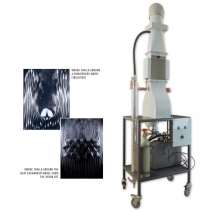


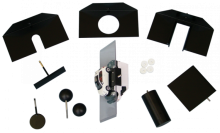
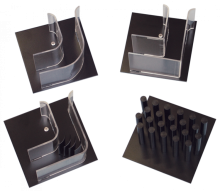
A floor standing suction type subsonic wind tunnel with smoke visualisation. It allows demonstrations and student investigations into the flow of air around a wide variety of different shaped models.
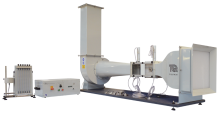
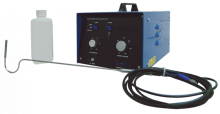
Open-circuit, bench top subsonic wind tunnel for a wide range of investigations into aerodynamics. Included with the Wind Tunnel are 3 sets of different models and the Basic Lift and Drag Balance.
